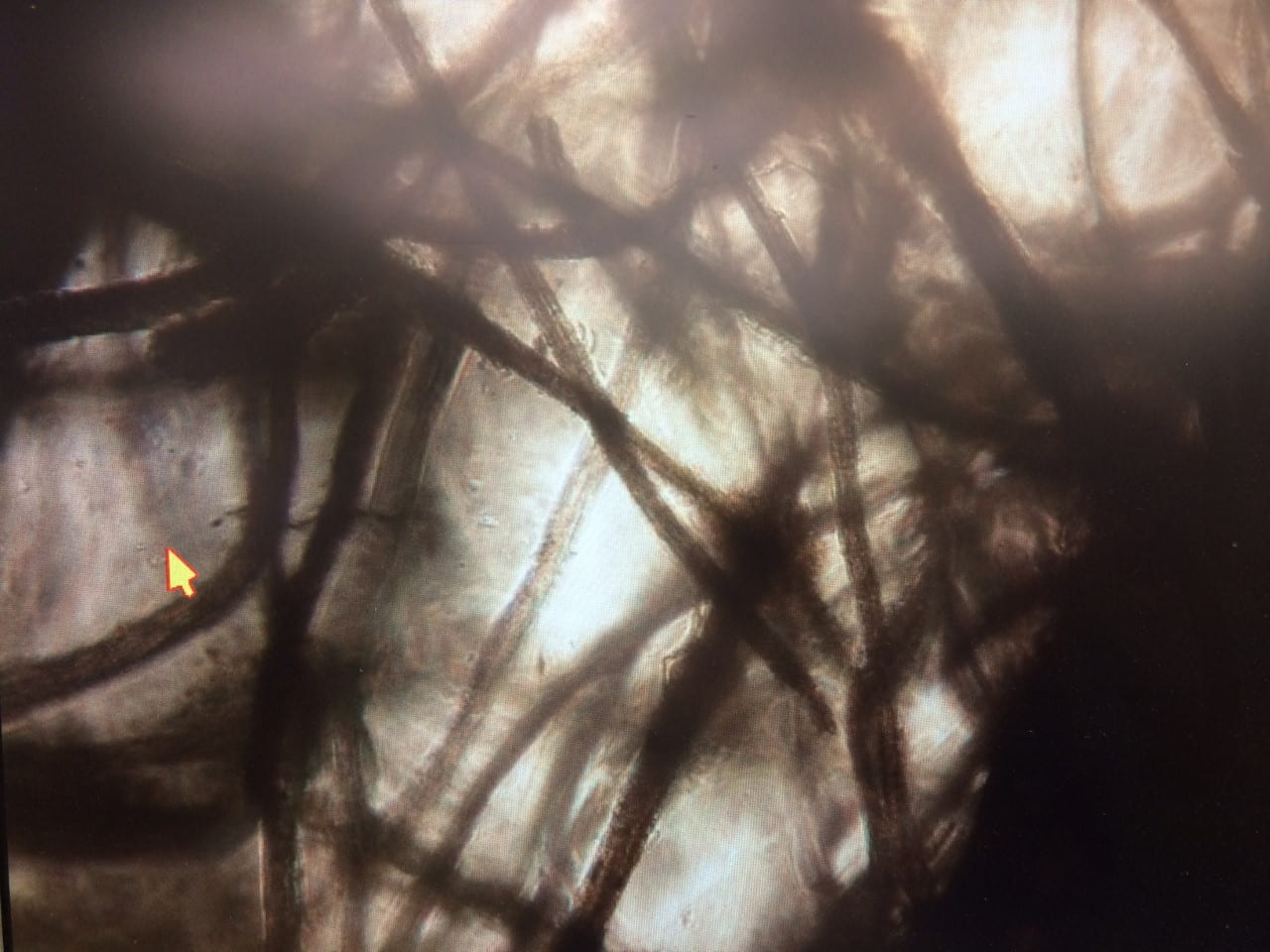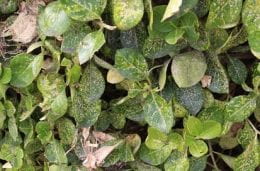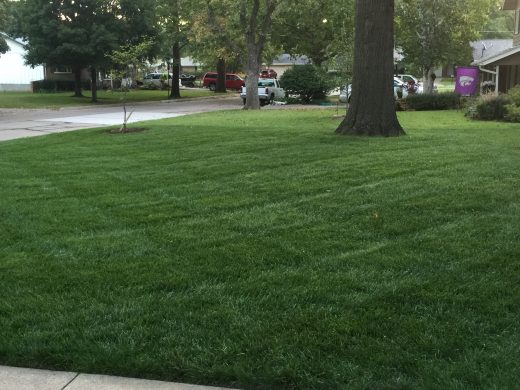By Dr. Cheryl Boyer
Dr. Chris Marble at the University of Florida is a weed management whiz. He’s a machine with research and writing and a kind friend and teammate of mine from graduate school at Auburn University. Naturally, I’m pretty excited and proud to see a paper he has authored published. I’m going to kick off my series of posts for the K-State Turf and Landscape Blog by reviewing some of his journal articles with clarity on which practices apply to Kansas and which may not (since they have a few different weeds in Florida).
First up is the first in a two-part review of weed control practices for landscape planting beds. We all know that fighting weeds is a significant part of work in both landscape and turf worlds. Chemicals vary for both of those applications, and we’ll get into that next time. For now, nonchemical weed control is where we’ll start. What comes to mind? If you’re thinking mulching and hand weeding, you’d be right. However, some best practices may impact other weed management choices and hopefully result in reduced herbicide application.
Types of nonchemical weed control:
| Type | Example | Pros | Cons |
| Mechanical disruption | Mowing, hand-pulling, hoeing, tilling | Depending on the application, it may be the most aesthetically pleasing approach. | Time-consuming, labor-intensive, disrupts soil structure, may propagate weeds. |
| Physical barriers | Geotextiles, landscape films, or fabrics | In combination with mulch, it can be very effective | Reapplication required, material may be destroyed by weeds growing on top of the fabric, does not contribute to soil health, in Kansas wind can be problematic |
| Cultural control | Mulching, plant selection, fertilization and irrigation placement, thermal treatment | Great for soil health (organic mulches), aesthetically pleasing, reasonable weed control when applied at least 3-inches deep | Mulch type matters, reapplication, and scouting required, inorganic mulches do not contribute to soil health, and rubber mulch leaches zinc and other heavy metals into the soil. |
Mulching is the A-#1 best choice for nonchemical weed control the average landscape bed. However, material selection is essential. For organic mulches, stick with large chunky (coarse) pine bark or pine needles and apply it at least 3-inches deep. Hardwood bark can be acceptable, but some species (and it’s not always easy to know which species is in the product you’re purchasing) have allelopathic chemicals which could damage ornamental plants. Fine-textured materials like compost and screened bark may encourage weed growth, so avoid those materials or refuse to accept a bark load that is too fine if you plan to use it for landscape mulch. These materials do break down over time which is good for soil health but requires reapplication.
Inorganic mulches are not ideal. They’re expensive, generally heavy, difficult to apply (and challenging to remove), and do not break down over time to contribute to soil health. Rock mulches, in particular, may bounce heat back up into the canopy of ornamental plantings, contributing to plant decline. Rubber mulches leach zinc and other heavy metals into the soil, which can also harm plants. I do not recommend inorganic mulches.
Now let’s address landscape fabric, geotextiles, etc. I don’t recommend plastic material because research has documented that water, air, and nutrients can’t get down to the soil, so ornamental plants don’t have access to the elements of life. While landscape fabric can be adequately effective, it is not usually so because weeds grow on top and through if not appropriately managed. Mulch cannot degrade into the soil (enhancing soil health and facilitating the mulch material staying in place). That’s an important point in Kansas, where the wind often whips loose mulch away from planting beds, particularly if landscape fabric is applied underneath. At that point, the landscape fabric is often unsightly, flapping in the wind with no mulch to hold it down (unless the “mulch” is rock). Landscape fabric is only effective for a short period of time and does not control perennial weeds. There may be some applications where landscape fabrics make sense, but I don’t recommend it in general.
Plant selection: we’re talking about perennial groundcovers now. If they grow densely enough and don’t die back to the ground during the winter, they may shade out some weeds. Of the studies mentioned in Dr. Marble’s review article, the ones that grow well in Kansas include:
- Lady’s mantle (Alchemilla mollis): 1 to 1.5 feet tall, 1.5 to 2.5 feet wide, June bloomer, full sun to part shade (can handle almost full shade, particularly in the afternoon), tolerates rabbit and deer. May be an aggressive self-seeder, remove spent flowers to avoid spreading too much.
- Catmint (Nepeta xfaassenii): 1 to 2 feet tall, 1.5 to 3 feet wide, blooms all summer, full sun to part shade, tolerates deer, dry soil, and shallow, rocky soil. Sterile.
- Moss phlox (Phlox subulata): up to 0.5 feet tall, 1 to 2 feet wide, flowers March to May, full sun, attracts butterflies, tolerates deer, drought, erosion. Need good drainage.
- Goldenrod (Solidago sphacelata): 1 to 1.5 feet tall and wide, flowers in the fall, attracts butterflies, tolerates deer, drought, erosion, clay soil, dry soil, and shallow-rocky soil. Can colonize through rhizomes and self-seeding (needs deadheading to manage).
- Sheep’s burr (Acaena inermis ‘Purpurea’): 1 to 2 feet wide, 1.5 to 3 feet wide, blooms June to August, prefers full sun and dry soil (low maintenance), tolerates deer, drought, and shallow-rocky soil.
Of course, we have to think carefully about using plant choice as a nonchemical weed suppression tool because some plants can become invasive (Liriope spicata, for example). Be aware of the Kansas noxious and invasive weed lists; you can find them here: https://agriculture.ks.gov/divisions-programs/plant-protect-weed-control/noxious-weed-control-program. Side note: did you know we have Kudzu in Kansas? It’s true, sadly. Kudzu is an interesting plant, but that is a story for another day.
Hand weeding and cultivation are always an option, although labor-intensive (and thus costly). Without other control measures, weeds will likely pop up again quickly.
Here’s a fun one: Thermal weed control. That’s right, steam, hot water, flame from a propane burner, or solarization. Thermal weed control has limited applications because you need to be careful about the areas around where you use the tool. Ideally, the use of these tools will be centered on hardscapes and other non-planted areas to eliminate large perennial and grass weeds. Solarization is a long-term process where plastic is used to cover areas for an extended amount of time to kill weeds and weed seeds. It requires reapplication and could damage nearby ornamentals or other tools like hoses or irrigation heads. These are likely not your best choices for nonchemical weed control and additionally can be dangerous. Use these as a last resort, get training, read manuals, and BE CAREFUL!
Lastly, consider fertilizer and irrigation placement. In container-grown nursery crop settings, weed pressure can be reduced when fertilizer is dibbled or banded within the container substrate profile. Fertilizer placement makes a lot of sense because if Nitrogen is easy to access, weeds will go to town (and your ornamentals may starve). Interestingly, sub-irrigation in container studies can be adequate for weed control. However, studies of sub-irrigation in landscape beds have proven it to be an ineffective practice for managing weeds.
These choices depend a great deal on the project, application, and client tolerance for weeds. The best approach is likely to apply various weed control methods, which may include chemical controls for the longest-lasting effect. We’ll cover those next time.
Marble, S.C., A.K. Koeser, and G. Hasing. 2015. A review of weed control practices in landscape planting beds: Part I—Nonchemical weed control methods. HortScience 50(6):851-856. https://doi.org/10.21273/HORTSCI.50.6.851








